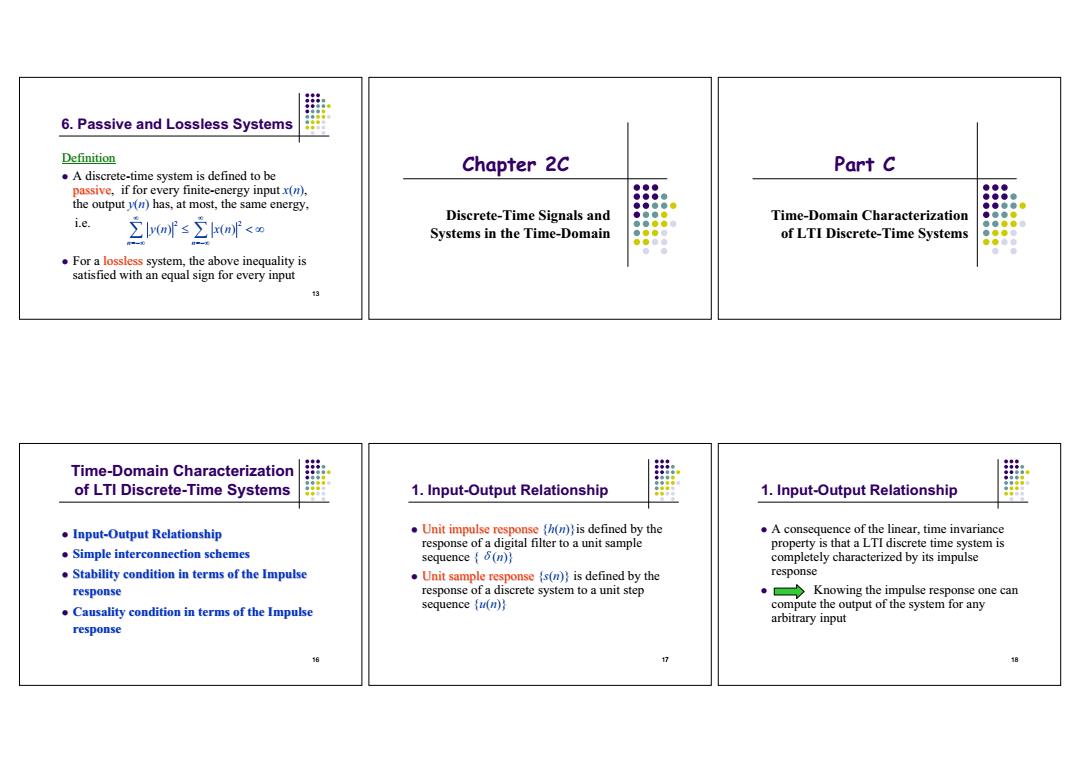正在加载图片...

6.Passive and Lossless Systems Definition .A discrete-time system is defined to be Chapter 2C Part C passive,if for every finite-energy input x(n), ●●● ●●● the output n)has,at most,the same energy, ●●● i.e. 立ofe2of< Discrete-Time Signals and Time-Domain Characterization Systems in the Time-Domain of LTI Discrete-Time Systems For a lossless system,the above inequality is satisfied with an equal sign for every input 13 Time-Domain Characterization of LTI Discrete-Time Systems 1.Input-Output Relationship 1.Input-Output Relationship Input-Output Relationship Unit impulse response h(n)is defined by the A consequence of the linear,time invariance response of a digital filter to a unit sample property is that a LTI discrete time system is Simple interconnection schemes sequence {6(n) completely characterized by its impulse Stability condition in terms of the Impulse .Unit sample response (s(n))is defined by the response response response of a discrete system to a unit step ·◆Knowing the impulse response one can Causality condition in terms of the Impulse sequence fu(n) compute the output of the system for any arbitrary input response 常 1813 6. Passive and Lossless Systems Definition A discrete-time system is defined to be passive passive, if for every finite-energy input x(n), the output y(n) has, at most, the same energy, i.e. For a lossless lossless system, the above inequality is satisfied with an equal sign for every input 2 2 () () n n yn xn Chapter 2C Discrete-Time Signals and Systems in the Time-Domain Part C Time-Domain Characterization of LTI Discrete-Time Systems 16 Time-Domain Characterization of LTI Discrete-Time Systems Input-Output Relationship Simple interconnection schemes Simple interconnection schemes Stability condition in terms of the Impulse Stability condition in terms of the Impulse response response Causality condition in terms of the Impulse Causality condition in terms of the Impulse response response 17 1. Input-Output Relationship Unit impulse response Unit impulse response {h(n)}is defined by the response of a digital filter to a unit sample sequence {¥(n)} Unit sample response Unit sample response {s(n)} is defined by the response of a discrete system to a unit step sequence {u(n)} 18 1. Input-Output Relationship A consequence of the linear, time invariance property is that a LTI discrete time system is completely characterized by its impulse response Knowing the impulse response one can compute the output of the system for any arbitrary input���������������